Despite the convenience and availability of LEDs, the neon lamp still has a viable position as a power-on indicator as well as use in some specialty applications.
This part continues the exploration of the neon lamp.
Q: Are there more details of the various operational phases?
A: Yes, the entire glow process has been studied by engineers and scientists extensively, with a simplified chart widely used to summarize the situation (Figure 1). Once the glow is initiated, the lamp must be operated in the middle zone marked “normal glow”; if the voltage or current gets too high, the normal ionization becomes unstable and transitions to a destructive arc.
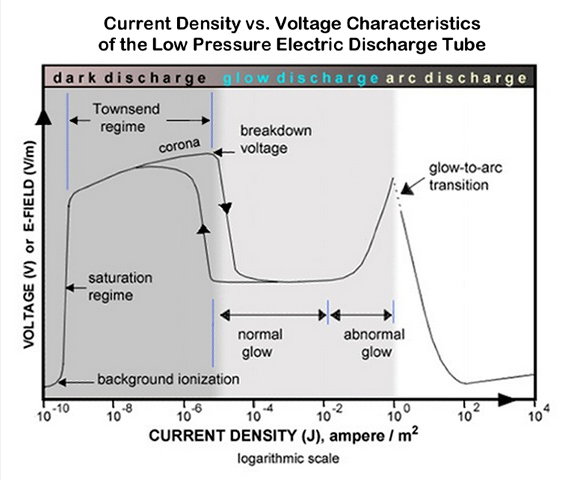
Q: Is more detail available for this curve?
A: Physicists have studied the neon-discharge action in detail for over one hundred years and identified each phase transition and the associated reason for it (Figure 2).
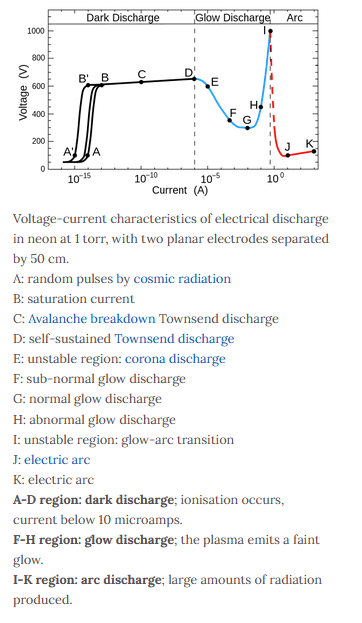
Q: Is the striking voltage affected by the lamp’s specific gas mixture and pressure?
A: Absolutely. Usually, the gas is a Penning mixture (named after Frans Michel Penning) which is 99 to 99.5% neon and 0.5%to 1.0% argon at a pressure of 1–20 torrs (0.13–2.67 kPa); this mixture has lower striking voltage than pure neon.
Q: What else affects the striking voltage?
A: External light falling on the electrodes provides a source of ionization to start the lamp; thus, lamps may need a higher and inconsistent starting voltage in total darkness. This is called the dark effect and is defined as a significant increase in the amount of voltage required to make a lamp glow when the lamp is in a dark environment. There are ways to minimize the dark effect by adding other chemicals to the internal mixture or even adding a tiny nearby incandescent light but doing so brings new issues and complications.
Q: What actually happens when the neon lamp initiates the current flow?
A: The negative electrons flow to the positive side of the circuit (anode) while the positive ions move to the negative side. The neon ion picks up an electron at the negative electrode, changing back to normal neon gas. That process produces a photon of light which we see as a glow at the negative pin (cathode).
Q: What’s the relative efficiency of a neon lamp?
A: It’s much better than the approximate 10% of an incandescent lamp, which converts most of the applied power into heat rather than light. Although numbers vary based on application specifics, bulb size and type, and other factors, a small neon lamp is more efficient than an incandescent lamp but less efficient than an LED-based lamp (60 to 80% for the same output lumens. (Note that their differing output wavelengths and spectra greatly complicate any analysis of luminous efficiency and efficacy.)
Q: I’m confused, is a neon lamp an AC or DC light source?
A: It’s both. It is not polarity biased like an incandescent lamp but unlike an LED. However, unlike an incandescent lamp, the ability to run on both AC and DC involves a very different mechanism. As noted above, an incandescent bulb glows by heating the filament via applied current and resistive losses, independent of the direction of current flow.
In contrast, a neon lamp is a DC device, but it doesn’t matter which way the two leads are connected to the source since it is a non-polarized component (unlike for a diode of any kind, including the LED). When you connect a neon lamp to DC, the cathode electrode glows, and the anode remains dark; if you reverse the DC connection, the symmetrical anode and cathode roles reverse. If you connect that same neon lamp to AC, the electrodes alternate glowing, and the eye sees this as a continuous glow (Figure 3).
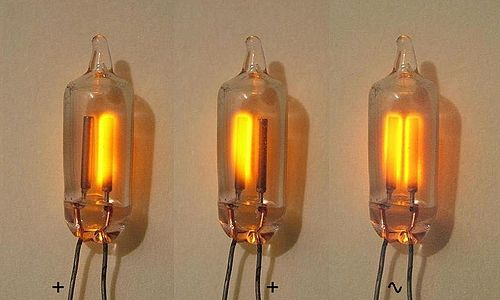
Q: What does a neon-lamp circuit look like?
A: It’s really simple: just a current-limiting resistor in series with the lamp itself (Figure 4 and Figure 5).


The value of the resistor depends on the bulb size and its current rating and is typically of the order of 50-to-100 kΩ for 120 VAC mains and twice that value for 220 VAC. The power rating for the resistor is also low, on the order of ¼ watt or less.
Q: Why use a neon lamp as an indicator instead of a small incandescent bulb, which doesn’t even need that resistor?
A: In addition to the higher efficiency of the neon lamp – which may be a factor but often is not in larger AC-line-powered systems – the main reason is a neon bulb has a longer life and better brightness at a given current. An incandescent bulb might last for 2000 to 10,000 hours (a little more than a year), but its output at low current values (milliamps) is also quite dim. In contrast, a neon lamp can easily last 50,000 hours, and many have been in operation for ten or more years.
The easiest way to extend the life of a neon lamp is to use a higher-value series resistor and accept a slightly dimmer output. As with incandescent bulbs, the relationship between lifetime and applied current (or voltage) is exponential, so a small decrease in source yields a large increase in life (and vice versa).
Q: What’s the failure mechanism for a neon lamp?
A: Neon lamps gradually decline in light output as electrodes evaporate and condense inside the glass envelope. This situation is gradual, with failure defined as a 50% decrease from the original brightness. As neon lamps age, the firing voltages slowly increase until the supply voltage value is reached. At this point, the lamp flickers and becomes erratic, indicating the end of the useful lifetime.
Q: What are some other advantages of neon lamps?
A: Neon lamps are very rugged and not affected by vibration, mechanical shock, or frequent on/off operation. Neon lamps may be operated over a wide temperature range from -40 to +150°C and are not susceptible to damage from voltage transients due to high-voltage static discharges.
The final part of this article looks at some special issues related to neon lamps and indicators.
EE World Related Content
Small LED Indicator For Thick Panels
High Voltage Industrial LED Panel Indicators
New 14-mm panel LED indicator light designed for rugged industrial use
Robust LED panel mount indicator series for frequent On/Off cycling
External References
Technical and DIY
- Wikipedia, “Neon lamp” (basic reference)
- Wikiwand, “Neon lamp” (technical with extensive references)
- YouTube, “Lighting the Neon Bulb” (basic hands-on project)
- ch, “Neon glow lamps: more than simple light sources” (lots of DIY projects)
- Hackaday, “The Humble NE-2 Neon Lamp Has A New Trick” (DIY projects)
- Bristol Watch, “Neon NE-2 Circuits You Can Build” (DIY projects)
- Homemade Circuit Projects, “Neon Lamps – Working and Application Circuits” (DIY projects)
- International Light Technologies, Inc., “Neon Lamps: Application & Technical Notes” (technical and applications)
- Data Sheet Archive, “Chicago Miniature NE-2 Datasheet” (detailed data sheet)
- Thunderbolts Project, “V-J-characteristics-discharge-tube-JJ” (Discharge tube graph)
- ThoughtCo-DotDash/Meredith, “How Neon Lights Work (A Simple Explanation)”
- EGL-Neon, “Dispelling the “Inefficient Neon” Myth”
History
- ThoughtCo-DotDash/Meredith, “The History of Neon Signs” (history)
- Hackaday, “The History Of Neon Lights” (history)
- Will Moneymaker, “A Brief History of Neon Lighting” (history)
- Science History Institute “A Blaze of Crimson Light: The Story of Neon” (history)
- Neon Library, “Neon History” (history)
- Yellowpop, “A Brief History of Neon Signs” (history)
Neon signs
- Vida Signs, “Everything to know about Neon Signs: Power Consumption, Usage and much more”
- YouTube, “How Neon Signs Are Made for Restaurants — How to Make It”
- YouTube, “Neon Williams: Boston’s Last Neon Sign Shop”
- YouTube, “Here’s the science behind neon signs”
- Wikipedia, “Neon Sign”
- Tech Times LLC, “Revolutionizing Outdated Tech – LED Neon Signs”
- American Sign Museum
- NeonPlus, “Neon signs—how they work, how they perform and are there alternatives?”
- Wikipedia, “Neon Lighting”
LED on AC line
- Turbokeu, “AC-powered LED “
- ElecCircuit, “Many Simple LED AC mains voltage & current indicator circuits”
- Hobby Circuits, “AC Line powered LEDs”
Other
- EDN, “Cap-Drop Supply: Odd, Interesting, Useful… and Somewhat Dangerous”
- IEEE Spectrum, “The Nixie Tube Story: The Neon Display Tech That Engineers Can’t Quit”

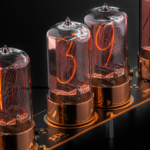
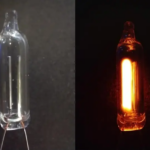
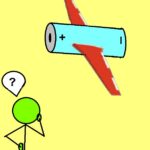




Leave a Reply